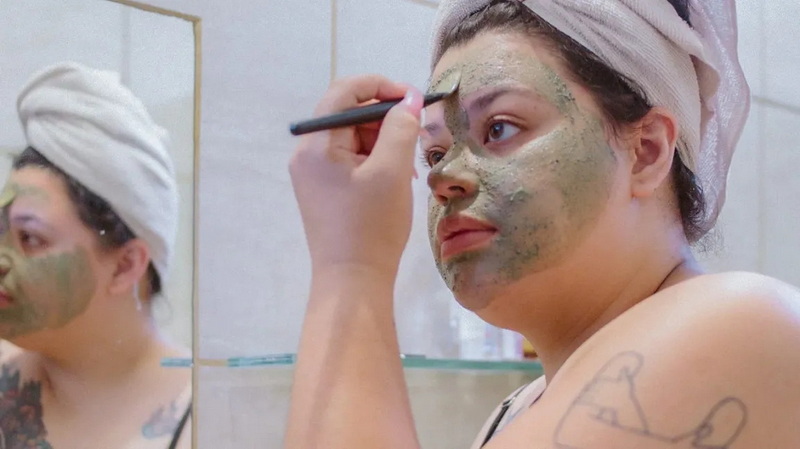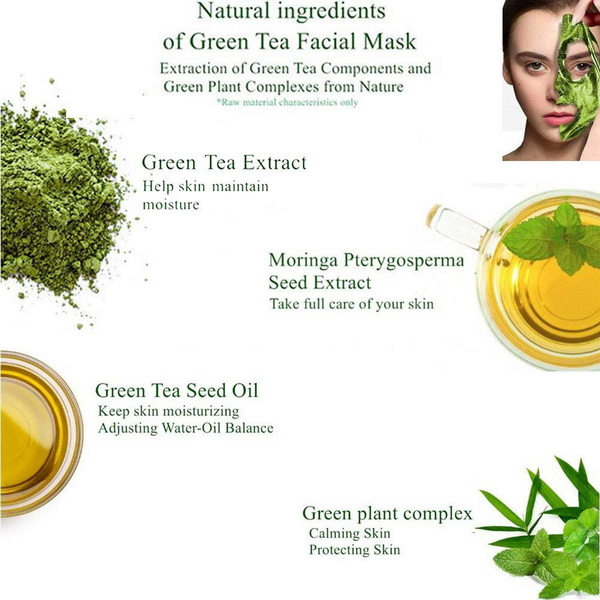Content Menu
● The Power of Green Tea in Skincare
● Making Green Tea Extract for Cosmetics
>> Ingredients and Equipment Needed:
>> Step-by-Step Process:
● Incorporating Green Tea Extract into Cosmetic Formulations
>> 1. Green Tea Toner
>> 2. Green Tea Moisturizer
>> 3. Green Tea Face Mask
● The Science Behind Green Tea's Skincare Benefits
● Advanced Techniques for Green Tea Extract Production
>> 1. Glycerin Extraction
>> 2. CO2 Extraction
● Formulation Tips for Green Tea-Based Cosmetics
● DIY Green Tea Skincare Recipes
>> Green Tea and Hyaluronic Acid Serum
>> Green Tea and Aloe Vera Gel
● Commercial Applications of Green Tea in Cosmetics
● Conclusion
● FAQ
>> 1. Is green tea extract suitable for all skin types?
>> 2. How long does homemade green tea extract last?
>> 3. Can I use green tea bags instead of loose leaves to make the extract?
>> 4. Are there any side effects of using green tea extract in skincare?
>> 5. How does green tea extract compare to other antioxidants in skincare?
● Citations:
Green tea has long been celebrated for its numerous health benefits, and in recent years, it has gained significant recognition in the beauty industry as a powerful ingredient in cosmetic formulations. The antioxidant-rich properties of green tea make it an excellent addition to skincare products, offering benefits such as anti-aging effects, soothing properties, and protection against environmental stressors. In this comprehensive guide, we'll explore the process of making green tea extract for cosmetics, its benefits, and various ways to incorporate it into your beauty routine.

The Power of Green Tea in Skincare
Green tea, derived from the Camellia sinensis plant, is packed with polyphenols and catechins, which are potent antioxidants[1]. These compounds offer a wide range of benefits for the skin, including:
1. Fighting free radicals and reducing oxidative stress
2. Soothing inflammation and redness
3. Improving skin elasticity and firmness
4. Helping to regulate sebum production
5. Providing a gentle astringent effect
When incorporated into cosmetic formulations, green tea extract can enhance the overall effectiveness of skincare products, making it a valuable ingredient for formulators and DIY enthusiasts alike.
Making Green Tea Extract for Cosmetics
Creating your own green tea extract for use in cosmetic formulations is a relatively simple process. Here's a step-by-step guide to help you get started:
Ingredients and Equipment Needed:
- High-quality green tea leaves or tea bags
- Distilled water
- A double boiler or heat-safe glass bowl
- Cheesecloth or fine-mesh strainer
- Preservative (optional, but recommended for longer shelf life)
- Dark glass bottles for storage
Step-by-Step Process:
1. Prepare the green tea: If using loose leaves, measure out about 1 tablespoon of green tea per cup of water. If using tea bags, use 1-2 tea bags per cup of water.
2. Heat the water: Using a double boiler or a heat-safe glass bowl set over a pot of simmering water, heat the distilled water to about 175°F (80°C). This temperature is ideal for extracting the beneficial compounds without damaging them.
3. Steep the tea: Add the green tea leaves or bags to the heated water and let them steep for about 20-30 minutes. Stir occasionally to ensure even extraction.
4. Strain the mixture: Remove the tea leaves or bags using a cheesecloth or fine-mesh strainer. Press gently to extract as much liquid as possible.
5. Cool and preserve: Allow the extract to cool to room temperature. If desired, add a preservative according to the manufacturer's instructions to extend the shelf life of your extract.
6. Store properly: Transfer the cooled extract to dark glass bottles and store in a cool, dark place. Without preservatives, the extract should be used within 1-2 weeks when refrigerated.
Incorporating Green Tea Extract into Cosmetic Formulations
Now that you have your homemade green tea extract, you can incorporate it into various cosmetic formulations. Here are some ideas to get you started:
1. Green Tea Toner
A simple and refreshing toner can be made by combining your green tea extract with other skin-loving ingredients:
- 1/2 cup green tea extract
- 1/4 cup witch hazel
- 5-10 drops of essential oil (optional)
Mix all ingredients in a bottle and use after cleansing to balance and refresh your skin.
2. Green Tea Moisturizer
Create a nourishing moisturizer by incorporating green tea extract into a base cream:
- 1/2 cup unscented base cream
- 2 tablespoons green tea extract
- 1 teaspoon vitamin E oil
Mix all ingredients thoroughly and apply to clean skin morning and night.
3. Green Tea Face Mask
For a soothing and antioxidant-rich face mask, try this simple recipe:
- 2 tablespoons green tea extract
- 1 tablespoon honey
- 1 teaspoon bentonite clay
Mix ingredients to form a paste, apply to clean skin, and rinse off after 10-15 minutes.

The Science Behind Green Tea's Skincare Benefits
Research has shown that green tea extract offers numerous benefits for the skin when used in cosmetic formulations. A study published in the Journal of the American Academy of Dermatology found that topical application of green tea extract resulted in an increase in collagen production in human skin cells[1]. This suggests that incorporating green tea into skincare formulations can support collagen synthesis, leading to smoother, more resilient skin.
Green tea's polyphenols, particularly epigallocatechin gallate (EGCG), have been found to have potent antioxidant and anti-inflammatory properties. These compounds can help protect the skin from UV damage, reduce redness and irritation, and even help in the treatment of certain skin conditions like acne[5].
Advanced Techniques for Green Tea Extract Production
For those looking to create more potent or specialized green tea extracts for cosmetic use, there are several advanced techniques to consider:
1. Glycerin Extraction
Using a mixture of glycerin and water can help extract both water-soluble and oil-soluble compounds from green tea, resulting in a more comprehensive extract:
1. Mix equal parts glycerin and distilled water.
2. Add green tea leaves to the mixture (1:10 ratio of tea to liquid).
3. Heat the mixture to 150°F (65°C) and maintain this temperature for 3-4 hours, stirring occasionally.
4. Strain and cool the extract before use.
2. CO2 Extraction
While not feasible for home production, CO2 extraction is a method used in commercial settings to produce highly concentrated green tea extracts:
- This process uses pressurized carbon dioxide to extract compounds from the tea leaves.
- It results in a potent extract that retains more of the tea's beneficial compounds.
- CO2-extracted green tea wax is particularly valued in cosmetic formulations for its emollient properties[1].
Formulation Tips for Green Tea-Based Cosmetics
When incorporating green tea extract into your cosmetic formulations, consider the following tips:
1. pH Balance: Green tea extract works best in slightly acidic formulations (pH 5.5-6.5) to maintain its stability and effectiveness.
2. Concentration: Start with a concentration of 1-5% green tea extract in your formulations and adjust based on desired effects and skin tolerance.
3. Synergistic Ingredients: Combine green tea extract with other antioxidants like vitamin C or E for enhanced benefits.
4. Stability: Green tea's catechins are sensitive to light and oxygen. Use opaque packaging and consider adding antioxidants like vitamin E to prolong shelf life.
5. Texture: Green tea extract can slightly alter the texture of formulations. Adjust other ingredients as needed to achieve the desired consistency.
DIY Green Tea Skincare Recipes
Here are some more advanced DIY recipes incorporating green tea extract:
Green Tea and Hyaluronic Acid Serum
- 1/2 cup distilled water
- 1 teaspoon hyaluronic acid powder
- 2 tablespoons green tea extract
- 5 drops vitamin E oil
- Preservative (as per manufacturer's instructions)
1. Slowly sprinkle the hyaluronic acid powder into the water, stirring constantly to avoid clumping.
2. Let it sit for a few hours or overnight to fully hydrate.
3. Add the green tea extract, vitamin E oil, and preservative.
4. Mix well and transfer to a dropper bottle.
Green Tea and Aloe Vera Gel
- 1/4 cup aloe vera gel
- 2 tablespoons green tea extract
- 1/4 teaspoon vitamin E oil
- 5 drops lavender essential oil (optional)
- Preservative (as per manufacturer's instructions)
1. Mix all ingredients in a small bowl until well combined.
2. Transfer to a clean jar or pump bottle.
3. Apply to skin as a lightweight, soothing moisturizer.
Commercial Applications of Green Tea in Cosmetics
Many cosmetic companies have recognized the benefits of green tea and incorporated it into their product lines. Here are some examples of how green tea extract is used in commercial cosmetic formulations:
1. Anti-aging creams: Green tea's antioxidant properties make it a popular ingredient in anti-aging products, helping to fight free radicals and reduce the appearance of fine lines and wrinkles.
2. Acne treatments: The anti-inflammatory and sebum-regulating properties of green tea make it effective in acne-fighting formulations.
3. Sun protection: Some sunscreens incorporate green tea extract to enhance their protective effects against UV damage.
4. Hair care: Green tea is used in shampoos and conditioners to promote scalp health and add shine to hair.
5. Eye creams: The soothing and antioxidant properties of green tea make it beneficial for the delicate eye area.

Conclusion
Green tea extract is a versatile and powerful ingredient in cosmetic formulations, offering a wide range of benefits for skin health and appearance. By understanding how to make and incorporate green tea extract into your skincare routine, you can harness its potent antioxidant and anti-inflammatory properties to create effective, natural cosmetic products.
Whether you're a DIY enthusiast or a professional formulator, green tea extract provides an excellent opportunity to enhance your skincare formulations with a scientifically-backed, natural ingredient. As research continues to unveil more benefits of green tea for skin health, we can expect to see even more innovative uses for this remarkable botanical in the world of cosmetics.
FAQ
1. Is green tea extract suitable for all skin types?
Green tea extract is generally well-tolerated by most skin types. It can be particularly beneficial for oily and acne-prone skin due to its sebum-regulating properties. However, as with any new skincare ingredient, it's always best to perform a patch test before widespread use, especially if you have sensitive skin.
2. How long does homemade green tea extract last?
Without preservatives, homemade green tea extract should be used within 1-2 weeks when stored in the refrigerator. Adding a broad-spectrum preservative can extend the shelf life to several months. Always check for any signs of spoilage before use.
3. Can I use green tea bags instead of loose leaves to make the extract?
Yes, you can use green tea bags to make the extract. However, loose leaves often provide a more potent extract as they allow for better water circulation during the steeping process. If using tea bags, you may want to use 1-2 extra bags per cup of water to achieve a similar strength.
4. Are there any side effects of using green tea extract in skincare?
While green tea extract is generally safe for topical use, some people may experience mild irritation or allergic reactions. If you notice any redness, itching, or discomfort after using products containing green tea extract, discontinue use and consult a dermatologist.
5. How does green tea extract compare to other antioxidants in skincare?
Green tea extract is a potent source of antioxidants, particularly catechins like EGCG. While it's highly effective, it's often best used in combination with other antioxidants like vitamin C or E for maximum benefits. Each antioxidant has unique properties, and using a variety can provide more comprehensive protection against different types of free radicals and environmental stressors.
Citations:
[1] https://formulabotanica.com/green-tea-cosmetic-formulations/
[2] https://pubmed.ncbi.nlm.nih.gov/23742288/
[3] https://teaperspective.com/make-your-own-green-tea-moisturizer/
[4] https://patents.google.com/patent/KR20170052811A/en
[5] https://www.healthline.com/health/benefits-of-green-tea-for-skin
[6] https://bodyunburdened.com/green-tea-is-a-skincare-superstar-3-diy-green-tea-skincare-recipes/
[7] https://onlinelibrary.wiley.com/doi/10.1111/j.1529-8019.2013.01552.x
[8] https://www.gloskinbeauty.com/exclusives/green-tea-extract
[9] https://naturallythinking.com/green-tea-extract






























